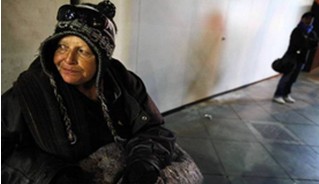
Homeless numbers grow in L.A. County
LA Times | 2013-12-01 20:22

The sharp increase from 50,000 to more than 58,000 homeless people marked a departure from counts in 2011 and 2012, which showed reductions of 3% to 7% over previous years. And it came despite hundreds of millions of dollars in government aid pouring into the county each year to get people off the streets.
"These numbers are troubling," said Mayor-elect Eric Garcetti, who pledged during his campaign to end homelessness. "The recovery has been more jobless than we would have liked."
It could get worse. More than $80 million in federal stimulus funds for emergency housing dried up in August, said Michael Arnold, executive director of the Los Angeles Homeless Services Authority, the joint city and county agency that conducted the count in January. Federal sequestration has frozen emergency housing vouchers in the city of Los Angeles, the housing department said.
Gov. Jerry Brown's realignment program diverted more than 15,000 low-level felons to Los Angeles County jails and probation programs, the Los Angeles County Probation Department reported. Arnold said that led to more people being released from jail without adequate services or housing.
"The environment has conspired to make it look bad for Los Angeles," Arnold said. "We really need the economy to recover at a faster pace."
The U.S. Department of Housing and Urban Development has required a biannual homeless count since 2005 for jurisdictions that receive federal aid. This year's street count, involving 71 of the county's 88 cities and more than 5,000 volunteers, is considered the most accurate to date. The 58,000 figure reflects how many people are without homes on any given day; 190,000 lose their homes over the course of a year, authorities said.
The biggest jumps in the homeless numbers were among single men and people who have been without permanent shelter for a year or more, the study found. More white people are becoming homeless; the number was up 12% from 2011.
Homelessness among veterans and their families, on the other hand, showed a marked drop. Arnold said the improvement is an outgrowth of hundreds of millions of dollars of federal aid directed to veteran families.
"If we could have that same commitment to every other population, I think we would see a big dent," said Flora Gil Krisiloff, a deputy to Los Angeles County Supervisor Zev Yaroslavsky and a member of the commission that governs the Homeless Services Authority.
Homelessness traditionally lags behind economic downturns, Arnold said, as people hit with job losses or other setbacks struggle to stay afloat and then finally run out of options. The Los Angeles County unemployment rate was 11.2 % in 2012 and 13.2 % in 2011, one of the highest in the country.
"It takes a long time to burn through your resources and become homeless," Arnold said.
At the same time, the rising economy has pulled up housing costs. In 2009, the average rent for a two-bedroom apartment in the Los Angeles-Long Beach area was $1,361. In 2013, that jumped to $1,421, according to a study by the National Low Income Housing Coalition.
The number of emergency shelters has dropped by 8%, also because of the downturn, the study found.
"We have a real erosion in emergency shelter," said Kerry Morrison, another member of the homeless services commission. "It's worrisome that we're slipping down the slope with no place to put people."
Some homeless people were drawn to the county from outside by the weather, beaches, food banks and other assistance, the study found. Only 62% of those surveyed reported their previous address in Los Angeles County. An additional 18% said they were from other areas, and 20% refused to answer the question.
The rise in homelessness stemmed largely from an increase in the "hidden homeless" — people who stay in garages or backyards where they are difficult to find. But some homeless advocates questioned whether the hike in this category was accurate. Unlike the other numbers, it was based on telephone surveys of random households asking if they knew of people sleeping in cars, vans, carports, backyards or unconverted garages.
Garcetti said the homeless population is multifaceted, and every part of it needs to be studied.
"I've worked with homeless people since high school, and you cannot create one single portrait of who that is," Garcetti said. "I don't think there will ever be a one-size-fits-all solution."
Share this page



















